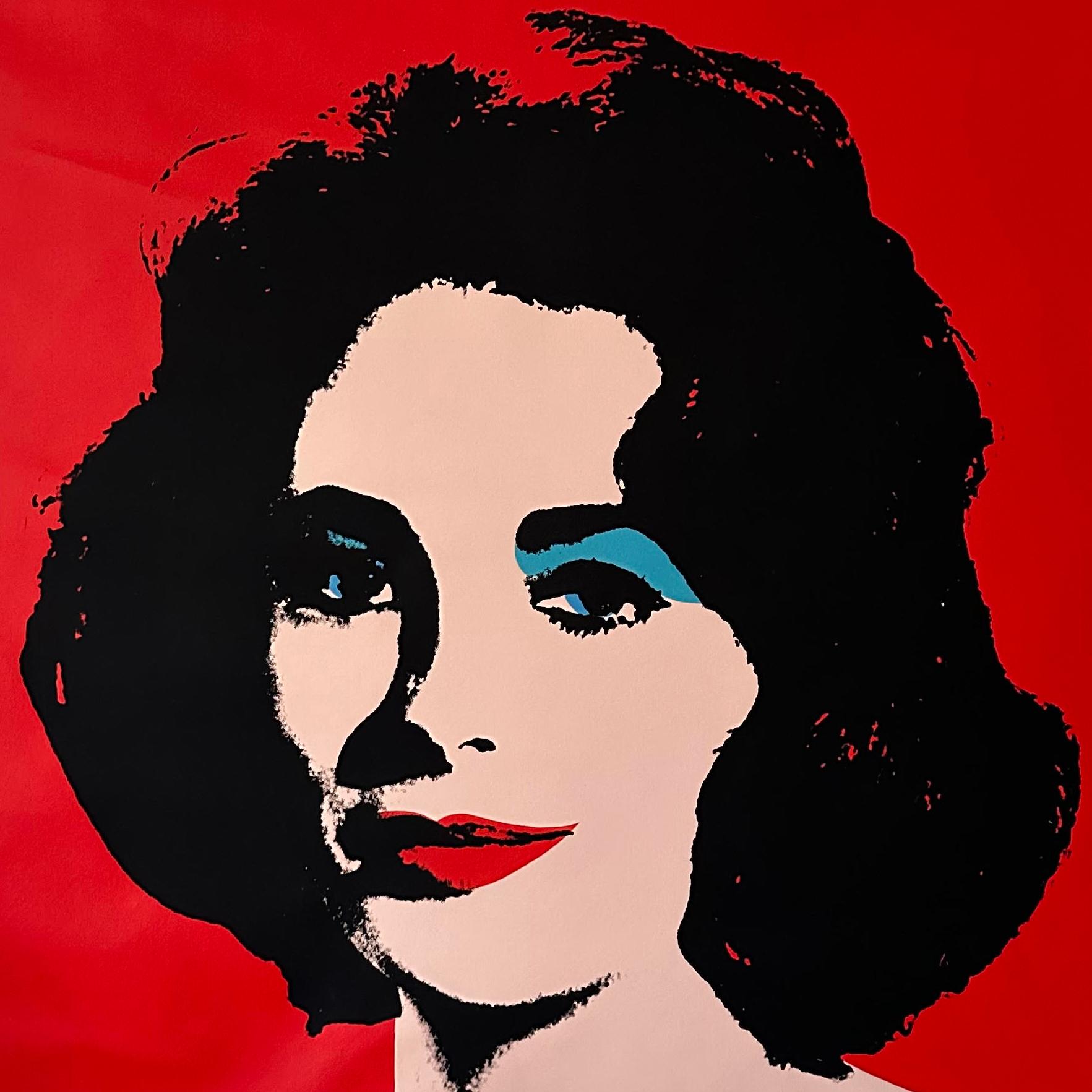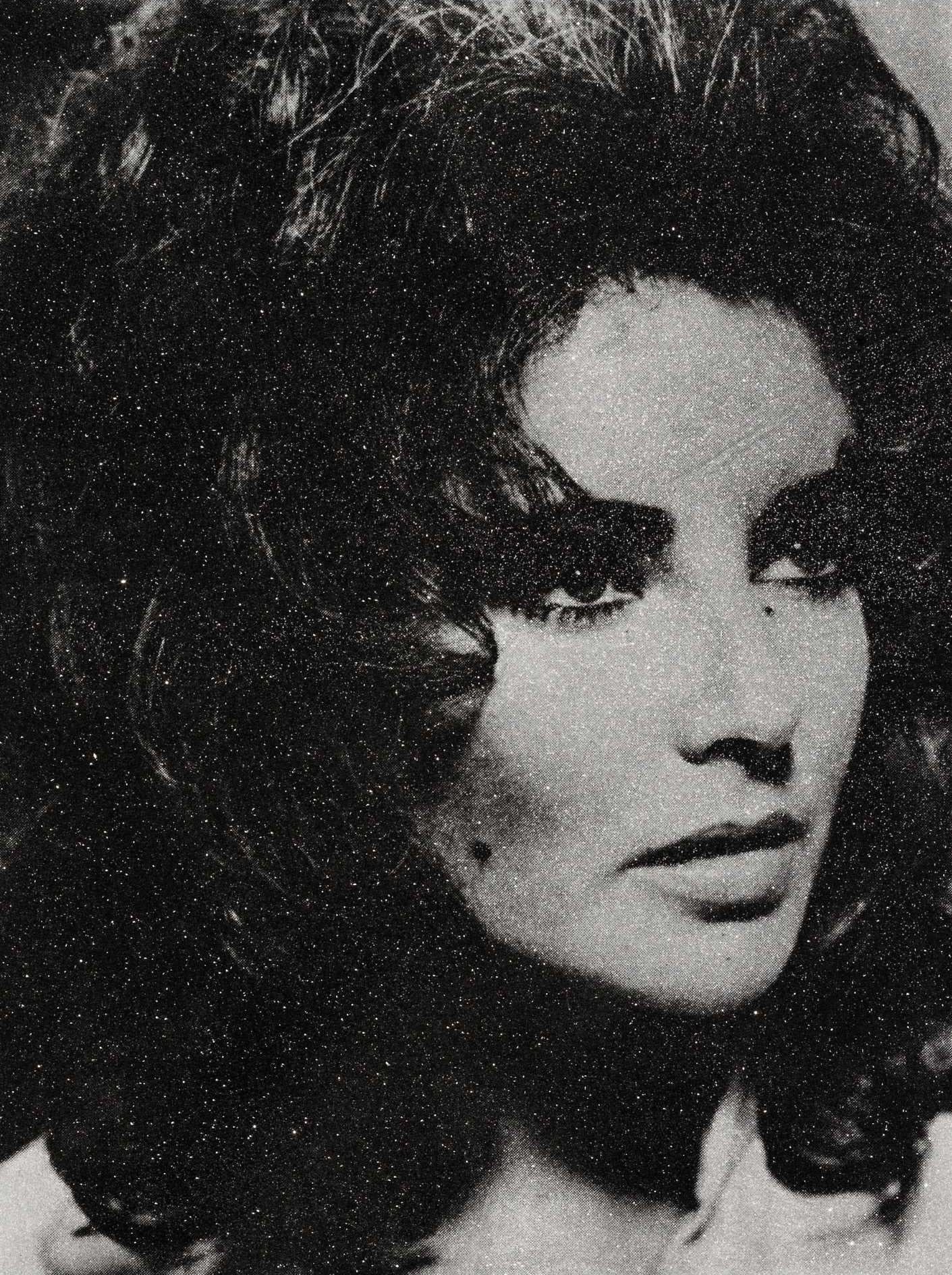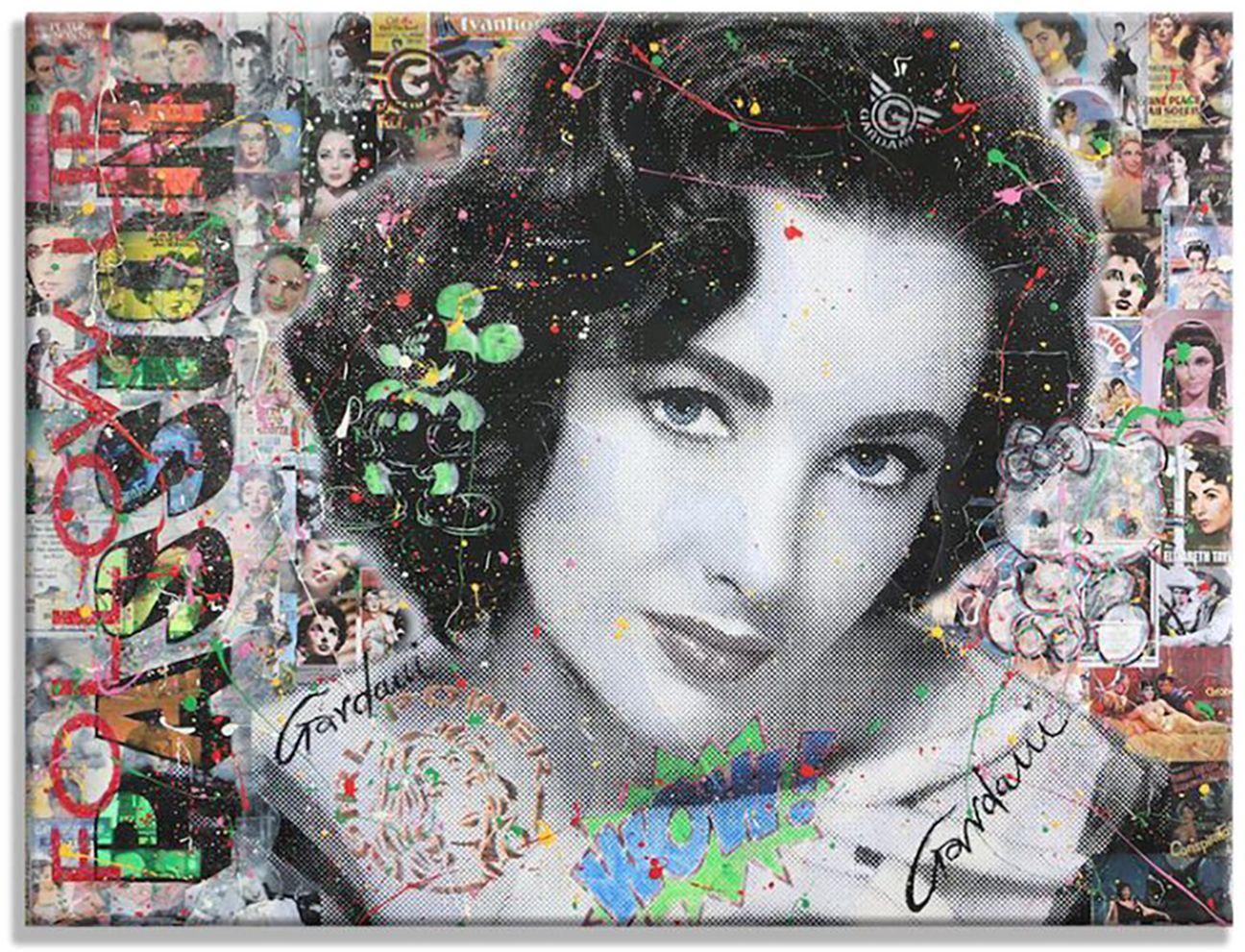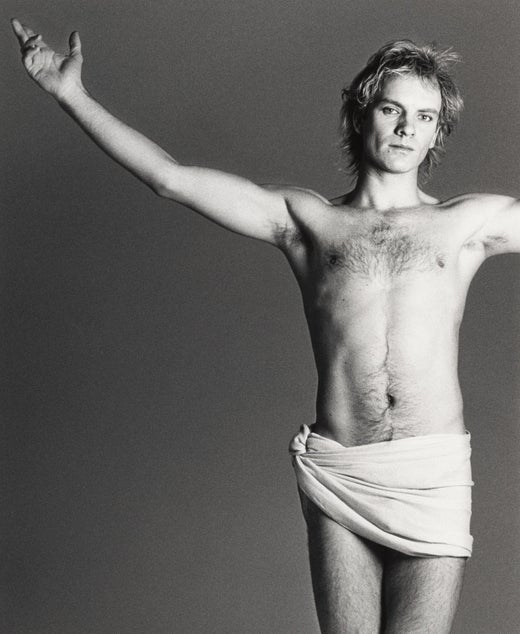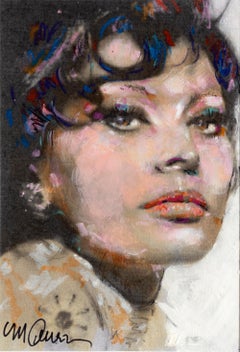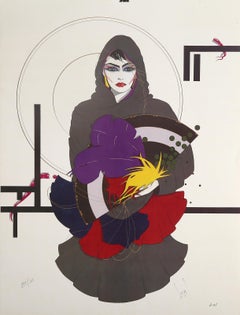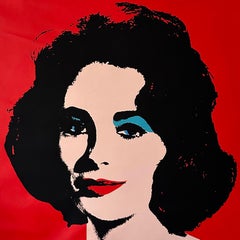Items Similar to Elizabeth Taylor
Want more images or videos?
Request additional images or videos from the seller
1 of 7
Francesco ScavulloElizabeth Taylor1983
1983
$75,000
£58,392.53
€66,409.11
CA$107,885.27
A$118,531.17
CHF 61,945.11
MX$1,413,582.30
NOK 784,392.75
SEK 730,728
DKK 496,240.20
About the Item
Artist: Francesco Scavullo, American (1921 - 2004)
Title: Elizabeth Taylor
Year: 1983
Medium: Photo-Silkscreen and Enamel on Canvas, signed verso
Size: 44 in. x 44 in. (111.76 cm x 111.76 cm)
Francesco Scavullo
Francesco Scavullo (1921–2004) was an American fashion photographer celebrated for his glamorous, highly polished style that helped define the look of late-20th-century popular culture. Born in Staten Island, New York, Scavullo began experimenting with photography in his teens, often using his sisters as models. After assisting Horst P. Horst at Vogue, he established his own career and quickly became one of the most in-demand photographers of his generation. Scavullo is best known for his decades-long collaboration with Cosmopolitan, where his bold, sensual, and confident images of women graced more than three decades of covers, beginning in the 1960s. His portraits extended well beyond fashion: he photographed countless celebrities, from Hollywood stars to musicians and cultural icons, including Barbra Streisand, Madonna, Grace Kelly, and Andy Warhol. His approach balanced glamour with intimacy, making his subjects appear both larger-than-life and approachable. Over the years, Scavullo published several books, including Scavullo on Beauty (1972), Scavullo Women (1982), and Scavullo: Photographs 1948–1984, which solidified his place in both the fashion and fine art worlds. His work has been exhibited internationally and is part of major collections, including the Museum of Modern Art in New York. For collectors, Scavullo’s posters, exhibition prints, and signed ephemera hold strong value. They not only capture the aesthetics of an era but also represent the enduring appeal of an artist whose images helped shape the public’s perception of beauty, celebrity, and style in the latter half of the 20th century.
About the Seller
4.9
Platinum Seller
Premium sellers with a 4.7+ rating and 24-hour response times
Established in 1979
1stDibs seller since 2014
3,170 sales on 1stDibs
Typical response time: 1 hour
- ShippingRetrieving quote...Shipping from: Long Island City, NY
- Return Policy
More From This Seller
View AllLena Horne
By Francesco Scavullo
Located in Long Island City, NY
Artist: Francesco Scavullo
Title: Lena Horne
Year: 1984
Medium: Screenprint and Enamel on Canvas, Signed Verso
Size: 34.75 x 32.25 in. (88.27 x 81.92 cm)
Category
1980s Pop Art Portrait Paintings
Materials
Canvas, Screen
Sophia Loren, Oil and Acrylic Portrait by Sid Maurer
By Sid Maurer
Located in Long Island City, NY
Artist: Sid Maurer
Title: Sophia Lauren
Medium: Oil and acrylic on foam core, signed lower left
Image Size: 12 x 8.5 inches
Mat Size: 17 x 13.25 inches
Category
Late 20th Century Pop Art Portrait Paintings
Materials
Oil, Acrylic
Change of Color, Screenprint by Scott Jacobs
By Scott Jacobs
Located in Long Island City, NY
Screenprint by Escotete (Scott Jacobs) of a fashionable woman in red, sitting in the passenger seat of a convertible. This print is signed, numbered, and ...
Category
1980s Pop Art Figurative Prints
Materials
Screen
Dominique, Pop Art Offset Lithograph by Steve Leal
By Steve Leal
Located in Long Island City, NY
Steve Leal, American (1962 - ) - Dominique, Year: circa 1983, Medium: Offset Lithograph, signed in ink and numbered in pencil, Edition: 184/200, Size: 27 x 20.5 in. (68.58 x 52.0...
Category
1980s Pop Art Portrait Prints
Materials
Lithograph, Offset
Desiree, Pop Art Offset Lithograph by Steve Leal
By Steve Leal
Located in Long Island City, NY
Steve Leal, American (1962 - ) - Desiree, Year: circa 1983, Medium: Offset Lithograph, signed in ink and numbered in pencil, Edition: 166/200, Size: 27 x 20.5 in. (68.58 x 52.07 cm)
Category
1980s Pop Art Portrait Prints
Materials
Lithograph, Offset
Eve, Pop Art Screenprint by Roy Ahlgren
By Roy Ahlgren
Located in Long Island City, NY
Artist: Roy Ahlgren, American (1927 - 2011)
Title: Eve
Year: 1974
Medium: Silkscreen, signed, titled and numbered in pencil
Edition: 11/50
Image Size: 18 x 18 inches
Size: 20 i...
Category
1970s Pop Art Portrait Prints
Materials
Screen
You May Also Like
Elizabeth Taylor Icon VIII /// Contemporary Street Pop Art Actress Fashion Model
By Jack Graves III
Located in Saint Augustine, FL
Artist: Jack Graves III (American, 1988-)
Title: "Elizabeth Taylor Icon VIII"
Series: Icon
*Signed by Graves lower right. It is also signed, titled, and dated on verso
Year: 2022
Me...
Category
2010s Contemporary Portrait Paintings
Materials
Canvas, Paint, Acrylic
Elizabeth Taylor Denied Andy Warhol Red Liz Painting Charles Lutz Pop Art
By Charles Lutz
Located in Brooklyn, NY
Denied Warhol Red Liz Painting on canvas by Charles Lutz
Silkscreen and acrylic on canvas with the artist's Denied stamp of the Andy Warhol Art Authentication Board.
40 x 40" inches...
Category
21st Century and Contemporary Pop Art Paintings
Materials
Linen, Acrylic
Elizabeth Taylor
By Russell Young
Located in PARIS, FR
Orignal and unique artwork by Russell Young.
Acrylic paint, enamel and diamond dust screen print on linen, unframed 62 x 48 inches, from the series "Diamond Dust".
Dark colors, hand...
Category
2010s Pop Art Portrait Paintings
Materials
Enamel
$17,600 Sale Price
20% Off
Elizabeth Taylor - Follow your Passion, Painting, Acrylic on Canvas
Located in Yardley, PA
Original Painting on Canvas. One-of-a-kind Pop Art Original Painting on Canvas by Gardani available for you. Hand signed by the Artist front and back, comes with official Gardani ...
Category
2010s Pop Art Paintings
Materials
Acrylic
Elizabeth Taylor
By André Monet
Located in Montreal, Quebec
Inspired by cinema, photography, music and literature, Monet has a natural connection and sense for the current society and his contemporaries. His signature conceptual assemblage of...
Category
2010s Contemporary Portrait Paintings
Materials
Mixed Media, Panel
Elizabeth Taylor Denied Andy Warhol Silver Liz Painting Charles Lutz Violet Eyes
By Charles Lutz
Located in Brooklyn, NY
Denied Warhol Silver Liz Painting on linen by Charles Lutz
Silkscreen and acrylic with silver enamel on canvas with the artist's Denied stamp of the Andy Warhol Art...
Category
21st Century and Contemporary Pop Art Paintings
Materials
Linen, Acrylic
Read More
Romare Bearden’s Humanity Infuses His Bright, Bold Art
Through collage, painting and printmaking, the artist foregrounded Black life in America in revolutionary new ways.
Chryssa’s 1962 Neon Sculpture Was Way ahead of the Art-World Curve
By working with lettering, neon and Pop imagery, Chryssa pioneered several postmodern themes at a time when most male artists detested commercial mediums.
